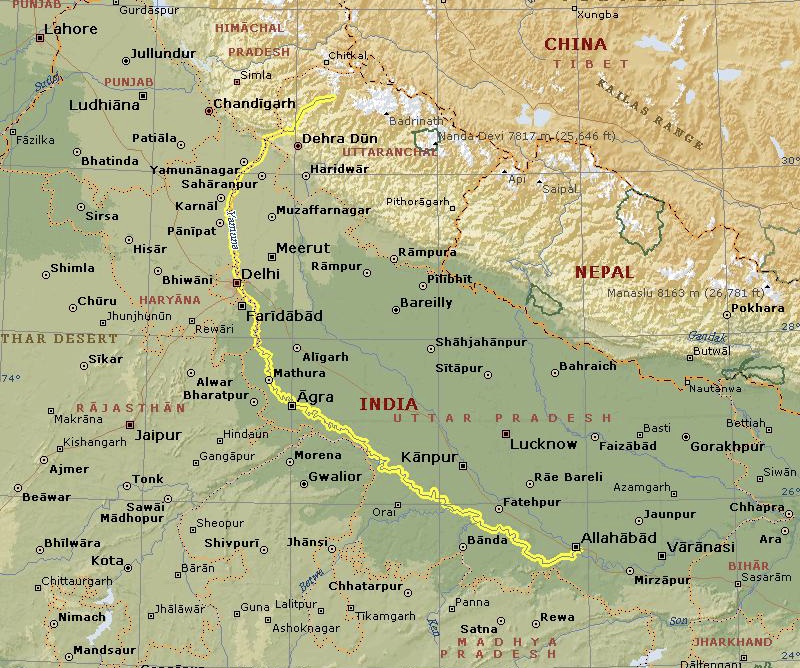Biodiversity & Environment
Water Quality Improves in Yamuna
- 21 Apr 2020
- 4 min read
Why in News
According to a report by the Delhi Pollution Control Committee (DPCC), the quality of water in the river Yamuna has improved along the Delhi stretch, compared to April 2019.
- DPCC, along with the Central Pollution Control Board (CPCB) carried out the study after being asked by a National Green Tribunal (NGT) appointed monitoring committee.
- Earlier, less air pollution and improved air quality were also noticed in various cities.
Key Points
- Data Analysis:
- DPCC collected water samples from nine locations along the Yamuna and twenty locations of drains and compared the different parameters with values from April 2019.
- According to the report, the pollution has reduced between 18% to 21% at various places.
- Five locations have shown 18%-33% reduction in Biochemical Oxygen Demand (BOD) levels. The rest of the locations have shown slight to considerable increase in BOD levels.
- Four of the nine locations where dissolved oxygen (DO) was nil in 2019 showed DO levels of 2.3-4.8 mg/l in 2020.
- However, the Yamuna has still not met the “water quality criteria”.
- Reasons:
Biochemical Oxygen Demand
- It is the amount of dissolved oxygen needed by microorganisms to decompose organic matter (waste or pollutants) under aerobic reaction (in the presence of oxygen).
- The more organic matter there is (e.g., in sewage and polluted bodies of water), the greater is the BOD; and the greater the BOD, the lower the amount of dissolved oxygen available for higher animals such as fishes.
- A higher BOD level means that more oxygen is needed to decompose a large quantity of organic matter present in the water.
- So, a higher value of BOD means that the water is more polluted.
- The BOD is therefore a reliable gauge of the organic pollution of a water body.
- One of the main reasons for treating wastewater prior to its discharge into a water resource is to lower its BOD i.e. to reduce its need of oxygen and thereby lessen its demand from the streams, lakes, rivers, or estuaries into which it is released.
- Dissolved Oxygen:
- It is the amount of dissolved oxygen present in the water which is needed for aquatic life to survive. The quality of water increases with an increase in DO levels.
- A DO level of 5 mg/l or above is the recommended level for bathing in a river.
Yamuna
- The river Yamuna, a major tributary of river Ganges, originates from the Yamunotri glacier near Bandarpoonch peaks in the Mussoorie range of the lower Himalayas at an elevation of about 6387 meters above mean sea level in Uttarkashi district of Uttarakhand.
- It meets the Ganges at the Sangam (where Kumbh mela is held) in Prayagraj, Uttar Pradesh after flowing through Uttarakhand, Himachal Pradesh, Haryana and Delhi.
- Length: 1376 km
- Important Dam: Lakhwar-Vyasi Dam (Uttarakhand), Tajewala Barrage Dam (Haryana) etc.
- Important Tributaries: Chambal, Sindh, Betwa and Ken.







